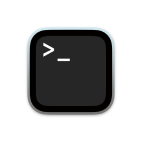Kitty vs. Warp
Warp and Kitty are both popular terminals that differ in key ways. Warp offers an AI-powered cloud-native terminal solution with seamless collaboration and extensive customization, while Kitty is a robust terminal emulator known for visual customizations, including images, color, configuration files, and mouse support.
Features

Kitty
Warp
Product Description
Kitty is a terminal emulator designed for power keyboard users.
Warp is a modern, Rust-based terminal with AI built in so you and your team can build great software, faster.
Tagline
N/A
Your terminal, reimagined.
Founded In
2017
2020
Mouse & Cursor Support
No
Yes. Warp’s text input editor is more like a modern IDE with selections, cursor positioning, and completion menus.
AI Integration (Scope & Depth)
Through plugins and external tools
Yes. Warp AI is fully integrated throughout the terminal to suggest commands and make workflows easier.
Collaborative Features
No
Yes. Warp Drive is a space in your terminal where you can securely save and share commands as workflows.
Reusable Workflows Or Scripts
No
Yes. Workflows are paramaterized commands you can save, share, and run on-demand.
Built With...
C, Python, Go, OpenGL
Rust
Close Or Open Source
Open Source
Closed Source
Cloud Enabled
No
Yes
Requires Log In
No
No
Pricing
N/A
Free for individuals; Charge for advanced AI or large team usage
Platform Availability
MacOS, Linux
MacOS, Linux, Windows
